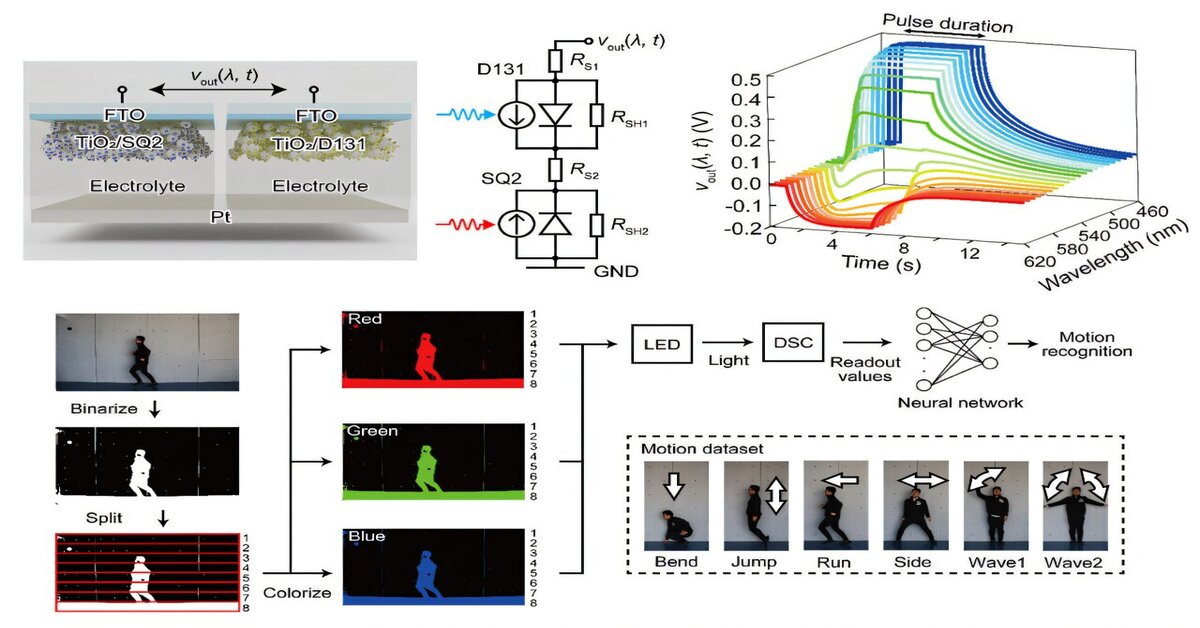In a significant leap for machine vision technology, researchers from Japan have unveiled a self-powered artificial synapse capable of recognizing colors with high accuracy—mirroring the performance of the human eye. The breakthrough, led by Associate Professor Takashi Ikuno at the Tokyo University of Science (TUS), promises to enhance visual recognition systems for a wide range of applications, particularly in autonomous vehicles and edge computing.
This innovative device leverages dye-sensitized solar cells to generate its own energy, eliminating the need for external power sources. As a result, it operates efficiently and independently while performing complex visual and logical tasks. The research, recently published in Scientific Reports (Volume 15, May 12, 2025), was co-authored by Hiroaki Komatsu and Norika Hosoda, both of whom are affiliated with TUS.
Tackling the Color Vision Challenge
Color recognition plays a vital role in how intelligent systems interpret the world. Tasks like identifying traffic signals, distinguishing road signs, or detecting obstacles require accurate color perception. Yet, most machine vision systems today still fall short when it comes to efficiently managing and interpreting color data, especially in resource-constrained environments such as edge devices.
Unlike traditional systems that rely heavily on high-powered processors and extensive data storage, the human visual system selectively filters and processes information, conserving energy while maintaining high performance. Inspired by this biological efficiency, scientists have turned to neuromorphic computing—a field that aims to mimic the neural architecture and processes of the brain.
Despite progress, two key hurdles have remained: enabling machines to recognize color as effectively as humans, and reducing the energy demands of such systems. The research team at TUS believes their new artificial synapse addresses both.
How the Device Works
The core of the innovation lies in the integration of two distinct dye-sensitized solar cells. Each responds differently to specific wavelengths of light, allowing the device to detect color variations across the visible spectrum. Remarkably, the synapse achieves a color resolution of 10 nanometers—very close to the capabilities of the human eye.
Another groundbreaking feature is its bipolar response: the device generates a positive voltage when exposed to blue light and a negative voltage under red light. This dual behavior enables it to carry out complex logic functions, often requiring multiple components in conventional systems, all within a single unit.
Dr. Ikuno emphasized the device’s potential: “Our results demonstrate a next-generation optoelectronic platform that performs both high-resolution color discrimination and logical operations, making it ideal for low-power AI systems.”
Practical Applications
To showcase the device’s utility, the researchers incorporated it into a physical reservoir computing framework to classify human movements based on red, green, and blue recordings. The system achieved 82% accuracy in recognizing 18 different movement-color combinations—using only one device instead of multiple sensors.
The team envisions widespread applications, from optical sensors in autonomous cars to portable medical devices and energy-efficient biometric sensors. As AI systems become more embedded in everyday life, innovations like this one may bridge the gap between human and machine perception, enabling smarter, greener technologies for the future.







